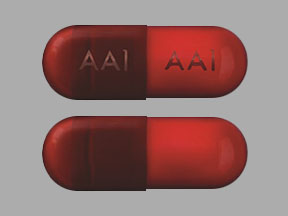Methyltestosterone Dosage
Medically reviewed by Drugs.com. Last updated on Jul 25, 2025.
Applies to the following strengths: 10 mg; 25 mg
Usual Adult Dose for:
Usual Pediatric Dose for:
Additional dosage information:
Usual Adult Dose for Hypogonadism - Male
10 to 50 mg orally once a day
- Adjust dose based on patient's response and appearance of adverse reactions
Comments:
- Prior to initiating, confirm hypogonadism diagnosis by ensuring serum testosterone concentrations have been measured in the morning on at least 2 separate days and these serum testosterone concentrations are below the normal range.
- Safety and efficacy in men with age-related hypogonadism (also referred to as late-onset hypogonadism) have not been established.
Uses: For replacement therapy in conditions associated with a deficiency or absence of endogenous testosterone such as congenital or acquired primary hypogonadism or congenital or acquired hypogonadotropic hypogonadism.
Usual Adult Dose for Breast Cancer-Palliative
50 to 200 mg orally once a day
Comments:
- Use of androgen therapy in women should be made by an oncologist with expertise in this field; androgen therapy occasionally appears to accelerate disease.
- Some premenopausal women with hormone-responsive therapy have benefited from androgen therapy.
Use: Adjunctive therapy in women with advancing inoperable breast cancer who are 1 to 5 years postmenopausal.
Usual Pediatric Dose for Delayed Puberty - Male
10 to 50 mg orally once a day
Delayed Puberty:
- Dosing generally starts at the lower end of the dosing range
- Titrate according to patient response and tolerance
- Duration of therapy should be limited to 4 to 6 months
Comments:
- If androgen deficiency occurs prior to puberty, androgen replacement therapy will be needed during the adolescent years for development of secondary sexual characteristics; prolonged androgen treatment will be required to maintain sexual characteristics.
- Dosing should be adjusted based on patient's response and appearance of adverse reactions.
Uses:
- For replacement therapy in conditions associated with a deficiency or absence of endogenous testosterone such as congenital or acquired primary hypogonadism or congenital or acquired hypogonadotropic hypogonadism.
- Androgens may be used to stimulate puberty in carefully selected males with clearly delayed puberty
Usual Pediatric Dose for Hypogonadism - Male
10 to 50 mg orally once a day
Delayed Puberty:
- Dosing generally starts at the lower end of the dosing range
- Titrate according to patient response and tolerance
- Duration of therapy should be limited to 4 to 6 months
Comments:
- If androgen deficiency occurs prior to puberty, androgen replacement therapy will be needed during the adolescent years for development of secondary sexual characteristics; prolonged androgen treatment will be required to maintain sexual characteristics.
- Dosing should be adjusted based on patient's response and appearance of adverse reactions.
Uses:
- For replacement therapy in conditions associated with a deficiency or absence of endogenous testosterone such as congenital or acquired primary hypogonadism or congenital or acquired hypogonadotropic hypogonadism.
- Androgens may be used to stimulate puberty in carefully selected males with clearly delayed puberty
Renal Dose Adjustments
Use with caution
Liver Dose Adjustments
Use with caution
Precautions
CONTRAINDICATIONS:
- Men with carcinomas of the breast or with known or suspected carcinomas of the prostate
- Women who are or may become pregnant
Consult WARNINGS section for additional precautions.
US Controlled Substance: Schedule III
Dialysis
Data not available
Other Comments
Administration advice:
- Administer orally
Storage requirements:
- Protect from light and moisture
General:
- Androgen therapy should be used very cautiously in children and only by specialists aware of the effects on bone maturation.
Monitoring:
- Periodic liver function tests should be performed
- Prepubertal males should have X-ray examinations of bone age every 6 months
- Periodically evaluate hemoglobin and hematocrit for polycythemia, especially with high doses
- Women should have frequent determinations of urine and serum calcium levels
Patient advice:
- Female patients should be instructed to report signs of virilization such as deepening voice, hirsutism, acne, clitoromegaly, and/or menstrual irregularities.
- Male patients should be instructed to report too frequent or persistent penile erections.
- All patients should be instructed to report signs and symptoms of jaundice or edema.
- Patients should understand this drug has been associated with venous thromboembolic events; they should be instructed to contact their healthcare provider promptly if signs or symptoms of DVT or PE develop.
- Patients should understand that this drug has been subject to abuse; steroid abuse can lead to serious cardiovascular and psychiatric adverse reactions.
More about methyltestosterone
- Check interactions
- Compare alternatives
- Pricing & coupons
- Drug images
- Side effects
- During pregnancy
- Drug class: androgens and anabolic steroids
- En español
Patient resources
Other brands
Professional resources
Other brands
Related treatment guides
See also:
Further information
Always consult your healthcare provider to ensure the information displayed on this page applies to your personal circumstances.


